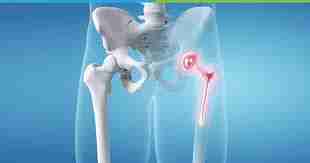
Hip and knee replacement surgeries have undergone a remarkable evolution over the years, revolutionizing the treatment of joint-related issues and significantly improving patients’ quality of life. From rudimentary procedures in the early 20th century to cutting-edge techniques and materials in the 21st century, the journey of hip and knee surgery Karachi is a testament to human ingenuity and medical progress.
The Dawn of Joint Replacement Surgery
The roots of hip and knee replacement surgery trace back to the early 20th century when pioneering surgeons began exploring ways to address joint deformities and disabilities. The earliest attempts at joint replacement were crude and often resulted in limited mobility and frequent complications. Materials like ivory, wood, and metal were used in these primitive procedures, which lacked the precision and durability required for long-term success.
Refinements and Innovations
The true evolution of hip and knee replacement surgery began in the mid-20th century with the introduction of more sophisticated techniques and materials. Surgeons experimented with various implant designs and materials, including stainless steel and polymethylmethacrylate (PMMA), leading to improved outcomes and durability. However, challenges such as implant loosening, wear, and instability persisted, driving further innovation in the field.
Advancements in Materials and Techniques
In recent decades, advancements in materials science, imaging technology, and surgical techniques have revolutionized hip and knee replacement surgery. High-performance materials like titanium, ceramic, and advanced plastics have replaced traditional metal implants, offering greater durability, biocompatibility, and longevity. Computer-assisted navigation systems and robotic surgery have enhanced the precision and accuracy of procedures, leading to better outcomes and faster recovery times for patients.
Customization and Personalization
One of the most significant trends in hip and knee replacement surgery is the shift towards customization and personalization. Surgeons now have access to advanced imaging techniques and 3D printing technology, allowing them to create patient-specific implants tailored to individual anatomy. This personalized approach improves implant fit, reduces the risk of complications, and enhances overall patient satisfaction.
Minimally Invasive Approaches
Another notable development in hip and knee replacement surgery is the adoption of minimally invasive techniques. These approaches involve smaller incisions, reduced muscle trauma, and faster recovery times compared to traditional open surgery. Minimally invasive procedures are increasingly popular among patients seeking quicker rehabilitation and minimal scarring.
Towards a Bright Future
As we look to the future, the evolution of hip and knee replacement surgery shows no signs of slowing down. Ongoing research into bioengineering, regenerative medicine, and implant coatings holds the promise of further improving implant longevity and reducing the need for revision surgeries. Additionally, advancements in telemedicine and remote monitoring may enhance post-operative care and long-term follow-up for patients.
Conclusion
The evolution of hip and knee replacement surgery is a testament to human innovation and perseverance in the face of challenging medical conditions. From humble beginnings to state-of-the-art procedures, the journey has been marked by continuous refinement and improvement. As technology continues to advance, patients can look forward to safer, more effective, and personalized treatments that restore mobility and improve quality of life.